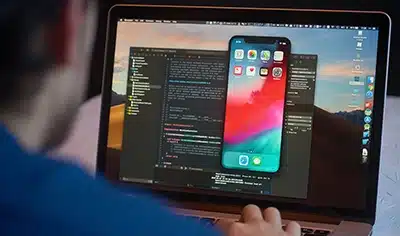Since the Coronavirus outbreak, the speed of digitization has picked up like never before. Organizations are continually looking for flexible and faster ways to develop business applications that could spike performance and help to survive the cut-throat competition. A Statista report indicates that the global mobile app revenue is expected to grow to 935 billion U.S. dollars by 2023. Google’s open-source development framework, Flutter, is one such platform that lets businesses develop high-scale, unique mobile apps in a shorter span.
What is Amping Up Flutter’s Adoption
Flutter mobile app development has gained quick traction because of the capabilities to address various concerns like loading the application faster, a wide range of customizable widgets, and compatibility with widely used platforms. With Flutter, you get an extensive SDK for building high-scale Android and iOS mobile apps using a single code base. This robust platform allows developers to create natively compiled mobile, web, and desktop apps faster. Flutter provides a holistic development ecosystem constituting a range of APIs, CLI tools, and pre-built widgets cutting down the development time and costs significantly.
How is Flutter Setting a Trend in Mobile App Development
Organizations around the globe are considering to approach professional Flutter app development services provider companies or hire Flutter app developers to set up MVPs. A Flutter app code can be compiled to web views and is reusable up to 90% that makes it a preferred choice for developing stunning mobile apps and user interfaces.
Used by over 39% of developers, Flutter is the second most popular framework for building cross-platform mobile applications and on GitHub, Flutter has acquired 120k stars recently.
1. Application Performance
The performance of any application is crucial and can make or break the path to customer retention and acquisition. Conventional cross-platform development platforms use JavaScript bridges for interpreting the application code that takes longer to load and execute the app. Flutter is a futuristic mobile app development built on Dart programming language that uses Ahead-of-Time (AOT) compiler. The AOT compilation provides a pre-compiled binary format, making code execution direct and faster on the native platform. This intercommunication helps to perform complex computing functions and render graphics much faster, contributing to a compelling user experience.
2. Hot Reloading
Hot reloading accelerates the re-development cycle by allowing changes to a live running application. Whenever anything changes in the app, the app picks up from where it left without restarting. Known as Stateful Hot Reload, this feature makes all design changes visible, speeding up the process of fixing bugs, UI building, and adding more features to the Flutter apps in real-time.
3. “Write-Once” Approach
The “Write-Once” approach is driving Flutter to take a front seat in mobile app development. Discarding conventional development approaches that need separate codes for diverse platforms, Google’s widely adopted platform enables developers to create a single code for Android and iOS, reducing the development time and effort. A single code base also contributes to enhancing the app design, quality, and performance. The common code minimizes possible errors and time to market.

4. Reduced Load of Testing
Flutter mobile app development is the simplest and easiest way to build MVPs. The single code base allows seamless integration of different plugins into apps. This not only shortens the development life cycle but also reduces the effort to assess multiple application codes and create test cases for different platforms. QA processes to validate the app functionality and features- across platforms are also shortened in Flutter, resulting in shorter release cycles.
5. UI Elements as Widgets
Widgets are integral to the application interface. Flutter UI elements come as ready-to-use widgets that can also be customized as per specific requirements. Though two out-of-the-box widgets- Material Design for Android apps and Cupertino for iOS applications are available in this framework, both work smoothly on cross-platforms with seemingly native appearance and behavior. From navigation to scrolling, Flutter powers up the mobile apps with optimized widgets to deliver a more engaging user experience regardless of the device screen size.
Flutter implements an open-source 2D graphics library written in C++, Skia, for rendering its high-performance, accurate, and high-quality UI components.
Take Away
Given all these distinctions, Flutter is proving to be a game-changer. Mobile app developers and development companies around the world are embracing Google’s framework for its extensibility, code reusability, design-specific UI elements, and cost-effective cross-platform development competencies. With more enhancements on its way, we might see Flutter ruling the mobile app development market soon.






